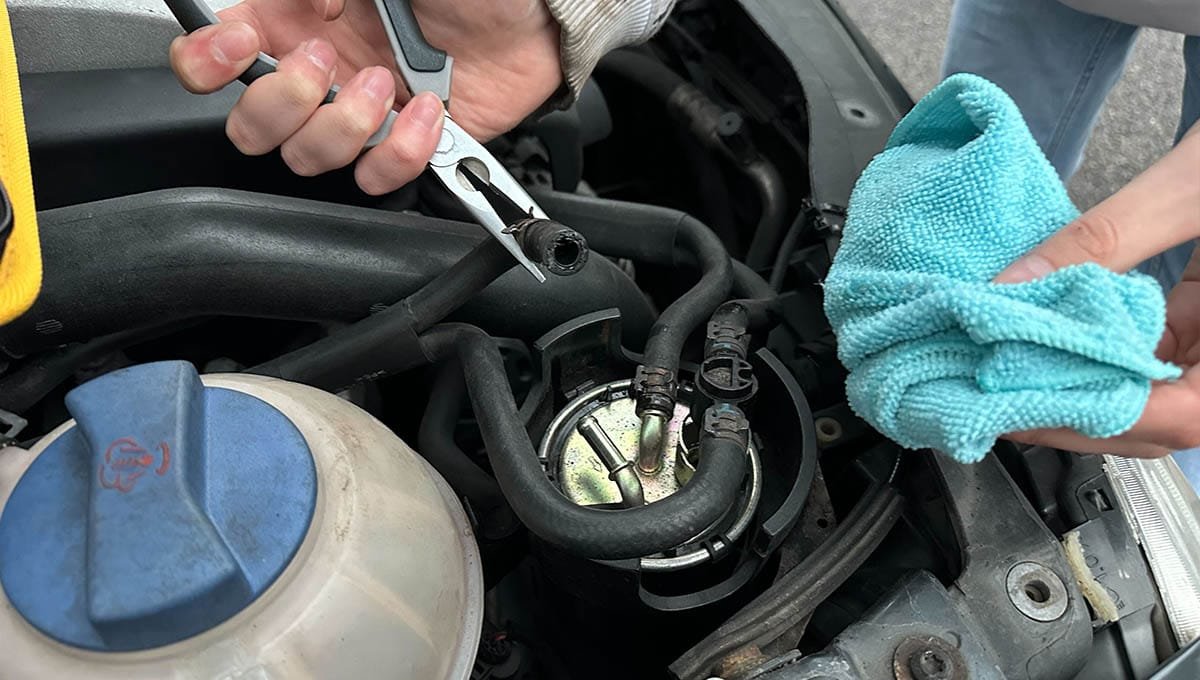Changing the fuel filter is part of most routine maintenance packages and helps keep your car running smoothly. Specifically, we’re looking at the VW Polo 9n and the fuel filter. This filter is straightforward to change and should be done every 20,000 to 150,000 miles (very broad, we know). If you want to be extra cautious, you can change it every two years or so as part of your standard service package.
Keeping your fuel system clean and fully functional is essential to running your Polo smoothly. There’s a reason you see a lot of VW Polo 9ns on the road—they are reliable, and with the proper care, yours can be, too. Here’s how to change your VW Polo 9n fuel filter at home with basic tools.
We have many more maintenance tips and guides for you to browse; if you’re performing a full service on your VW Polo, you might also need to know how to replace the air filter.
Method Summary
There’s not really much to this replacement, but a few things can go wrong if you’re not careful. The more confident among you might just need a brief overview of the method to get you going; we have provided just that below.
Locate the Fuel Filter: Find the fuel filter on the passenger side of the engine bay, just below the coolant reservoir.
Release the Filter Tab: Press the plastic tab to free the filter from its housing. No tools required.
Detach the Hoses: Use pliers to pinch and slide off the hose clamps from the filter’s connectors. Wiggle hoses gently if they resist.
Catch Fuel Spillage: Place a cloth over the filter to catch any leaking fuel as you detach hoses.
Remove the Old Filter: Carefully lift the filter out and dispose of it responsibly.
Prepare the New Filter: Remove any packaging or protective covers from the new filter.
Reconnect Hoses: Attach hoses in the same order, following the flow direction markings. Ensure clamps are secure.
Final Check: Double-check all connections and clamps to prevent leaks or rattling.
Prime the Fuel System: Turn the ignition on and off several times to restore fuel pressure before starting the engine.
Tools you will need
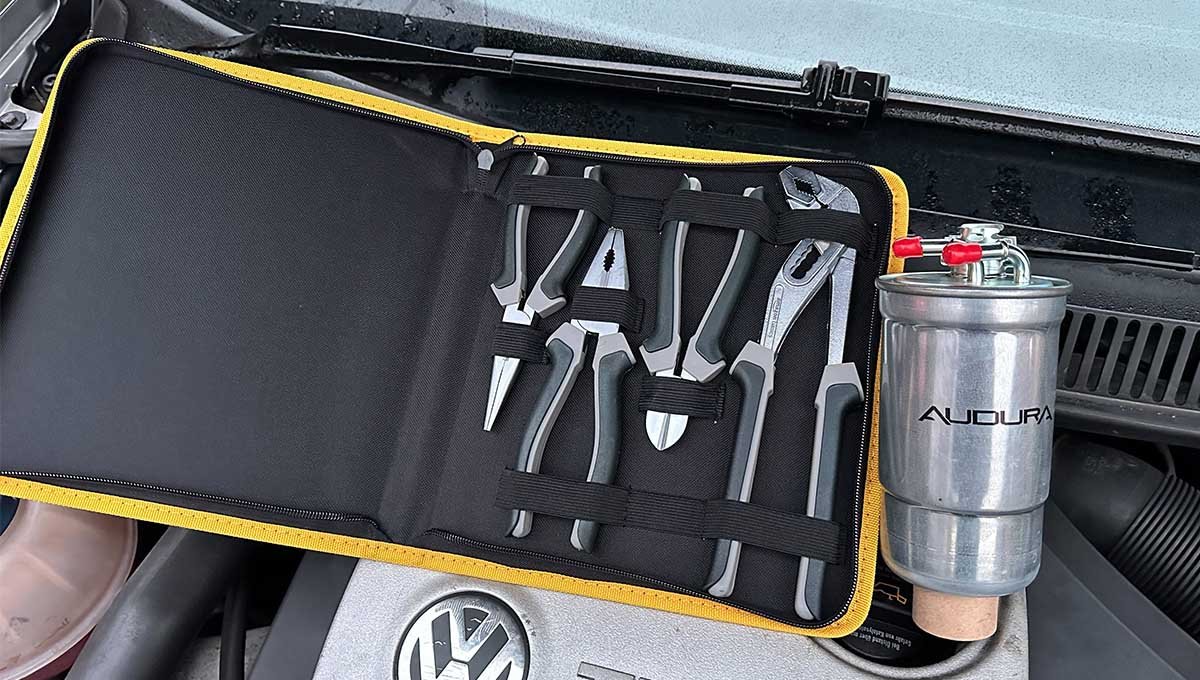
You don’t have to worry about having an expansive toolbox for this one; all you need is a pair of pliers and a rag or catch can to catch any fuel that may leak on the ground. The pliers help remove those hose clamps, which can be especially tricky if they have become rusty. And, of course, you need a replacement fuel filter. We recommend the Amazon Basics Plies set, as it’s what we are using.
You don’t need all the pliers in the set, but it’s good to have a few extra on hand in case you encounter a particularly stubborn clasp. We rate this set very highly.
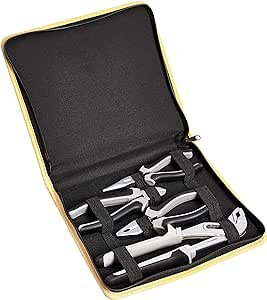
Amazon Basics Pliers set
Pros
- A set of 4 tools
- Durable feeling
- Comfy to hold
Cons
- Feel on the cheaper side
- Rough finish
How to replace the fuel filter on a VW Polo 9n
As promised, we’ll walk you through changing this very important item in your VW Polo. First, you need to locate the fuel filter.
Locate the fuel filter

The fuel filter on a VW Polo 9n is to the left of the engine, just below the coolant reservoir; many hoses protrude from its spherical top.
Undo the plastic tab holding the filter in place
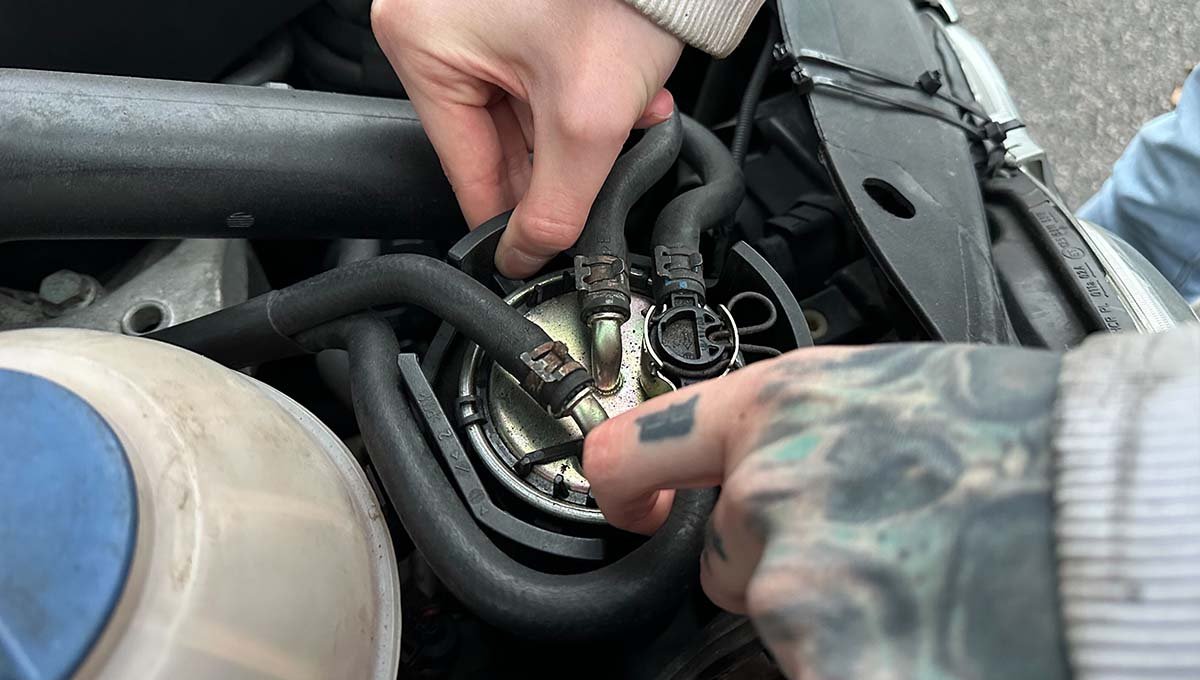
The plastic tab is situated to the right of the filter housing and doesn’t require a lot of pressure to push. You don’t need to use any tools for this, as the tab is fragile and the only thing holding the filter in the housing. You should now be able to lift the fuel filter freely out of its housing.
Undo the hoses
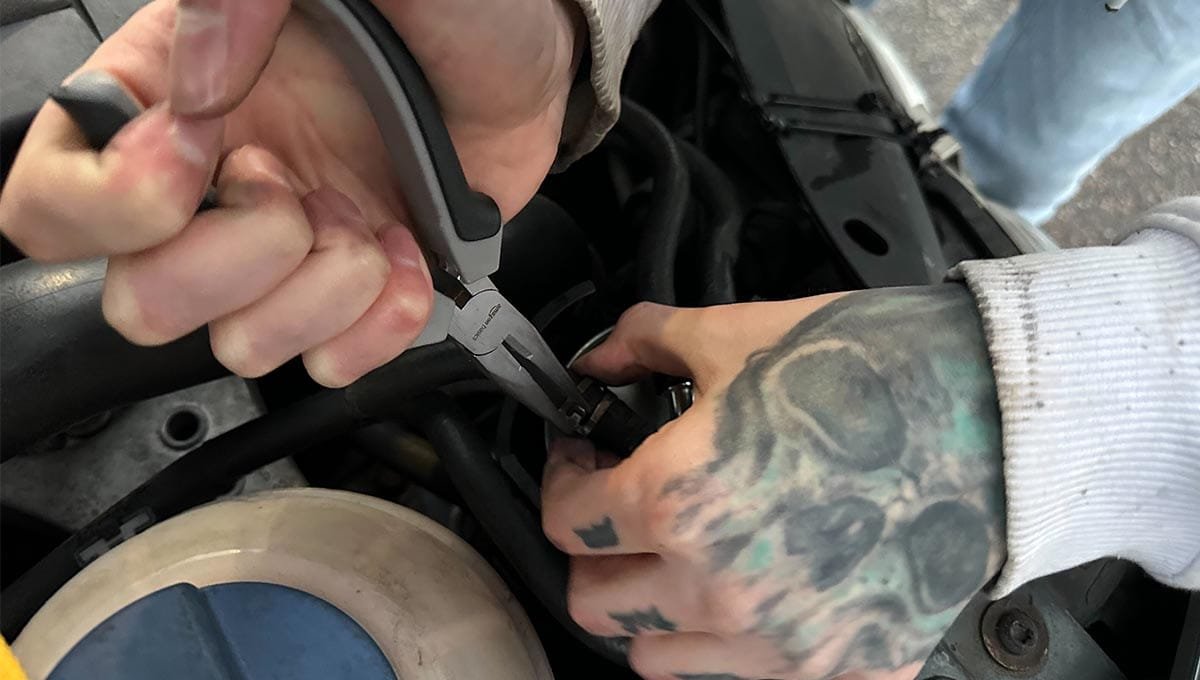
Next, grab your pliers and pinch the hose claps using the protruding metal tabs; this will loosen the clamp and allow you to slide the hose off the connectors on the filter. You might need to give them a bit of a wiggle if they have been on there for a long time, taking care not to damage the hose.
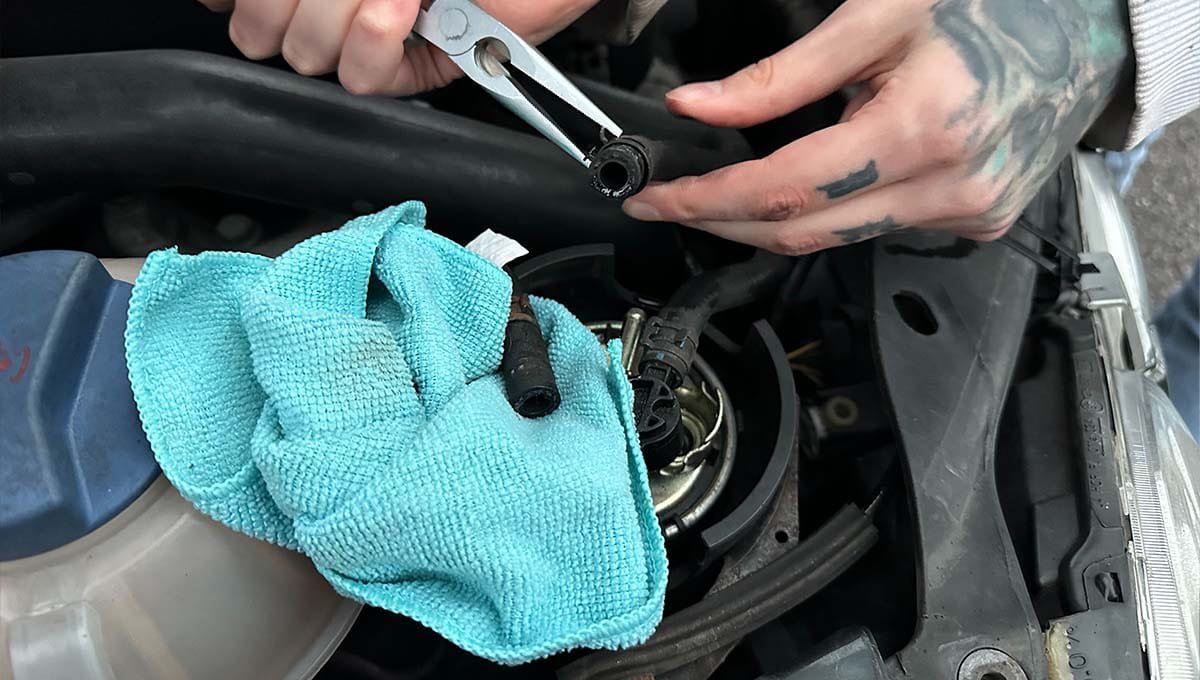
As you release the hoses, place a rag on top of the fuel filter to help catch any spilt diesel. It would be best if you released the hoses slowly, as this will help release fuel pressure built up in the system. If you pull the hoses off too quickly, you might spray diesel everywhere.
Take note of the flow direction printed on the fuel filter under each connector. Looking at the engine from the front, the topmost hose is the inlet, and the bottom hose is the outlet.
Remove the filter from the engine bay
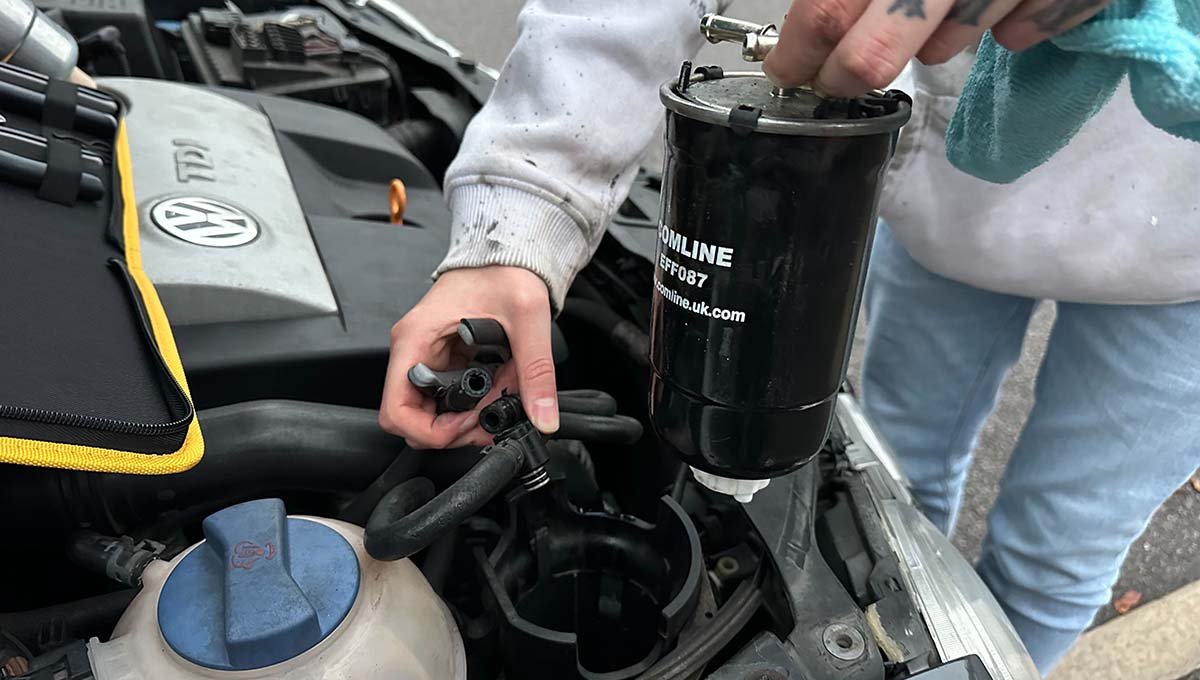
Once you have safely removed all of the hoses from the old filter, gently lift it out of the car – taking care not to spill any of the fuel left inside. You must dispose of this properly; your local recycling centre will be able to help with that.
Prepare the new filter
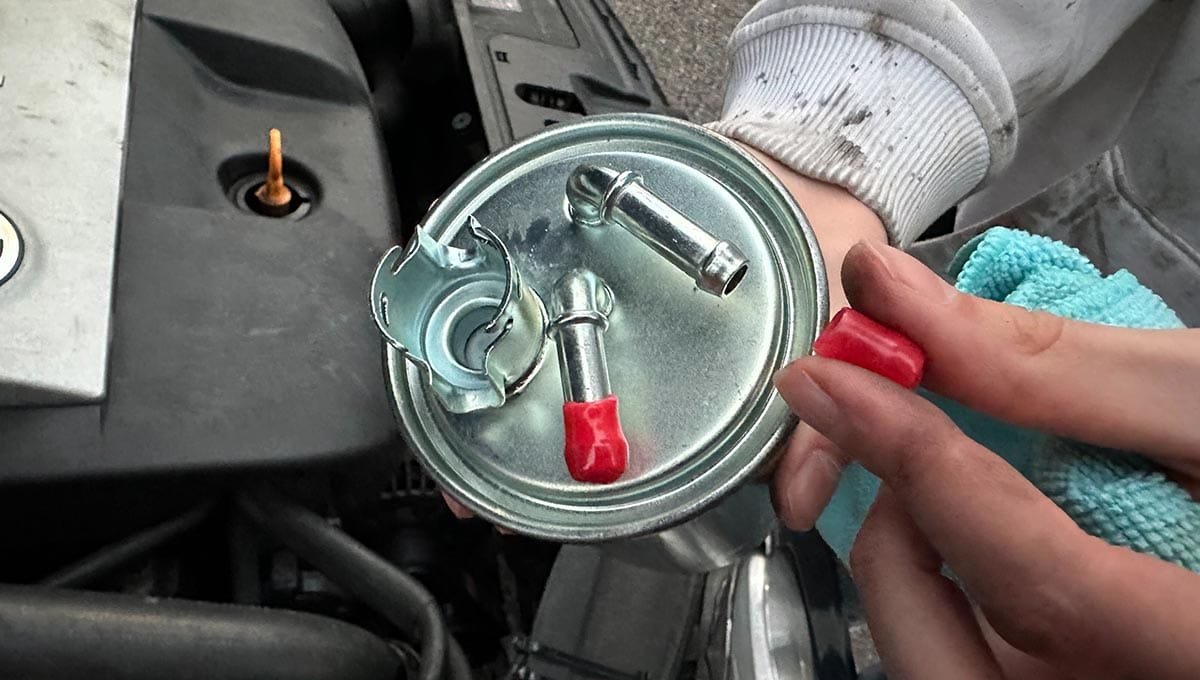
If you haven’t done so already, remove any rubber guards protecting the connectors, packaging, stickers, or other material left on the filter.
Replace the hoses in the same configuration
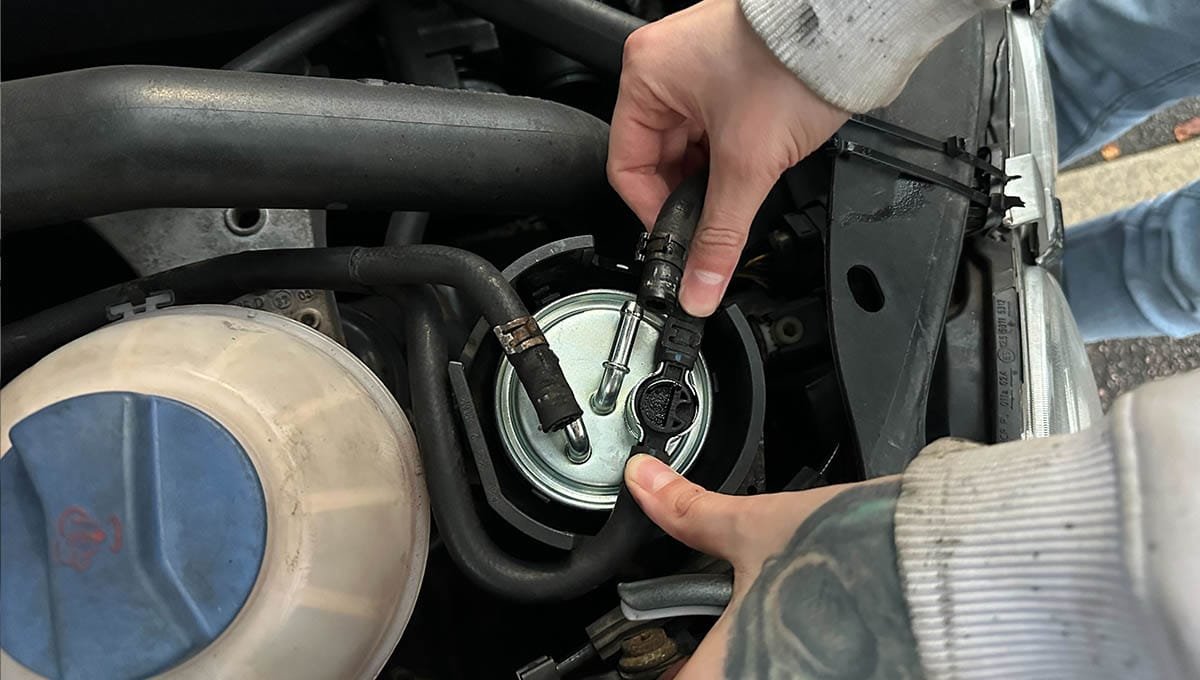
Replace the hoses in the same configuration from which you removed them. Again, pay attention to the markings indicating the direction of fuel flow through the filter.
Ensure the clamps are properly secure and do not restrict the fuel flow to the engine in any way. You may also need to wiggle the hoses back on to get them to go; they’re a tight fit, and for good reason.
Check the hoses are properly installed

Now, all that’s left to do is admire your handy work; we’re one step away from a DIY fuel filter swap on your VW Polo 9n. Now double-check that all the clamps are secure and the filter is installed correctly in its housing. Nothing should rattle or, worse, leak. It’s best to check this now before the next step.
Prime the fuel system to restore fuel pressure
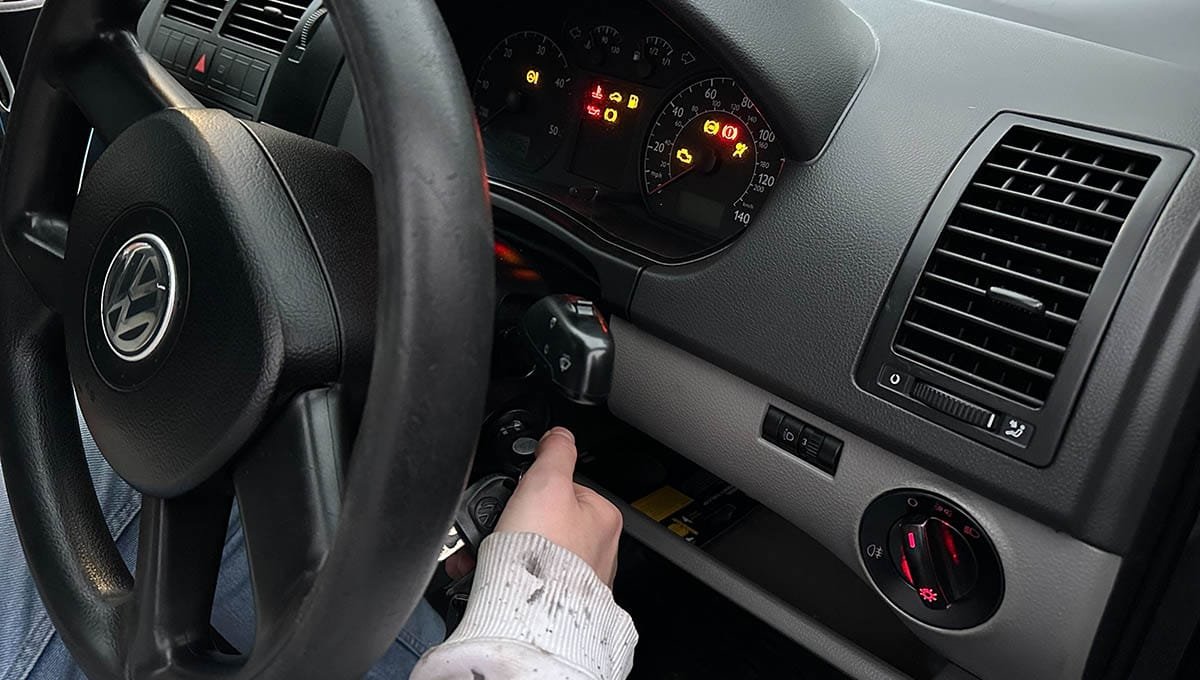
We need to cycle the ignition without turning the car on to restore the fuel pressure and get fuel flowing into the filter. All you need to do is turn on the ignition, wait a few seconds, turn it off, and repeat.
When the ignition is turned on, you will hear a whirring noise coming from the back of your car. This is the fuel pump priming to build up pressure in your fuel system. It should take 5 – 7 primes before fuel pressure returns to standard.
Before turning the car on, check for leaks again and ensure everything is okay. Once you’re satisfied, turn on the engine. That’s it—you’re finished!
Top tips for replacing the fuel filter
There are a few things to remember when replacing your fuel filter. We have outlined a few to make your life easier:
- Do not work around open flames: When working on the fuel system, it is especially important to check you aren’t working around any open flames. Flames can come from many sources, such as cigarettes, gas heaters, or anything that produces a spark. Diesel is far less volatile than petrol, but it’s not worth the chance.
Put something under your car: Diesel fuel dissolves binding agents on the tarmac, so you don’t want that on your drive. When replacing the filter, use a big piece of cardboard or a catch can to catch any diesel spillages.
Relieve Fuel Pressure: Before disconnecting the filter, it’s essential to relieve the pressure in the fuel system to avoid unwanted fuel sprays. You can do this by gently loosening the fittings on the filter itself to release the pressure gradually. Be sure to have a rag handy to catch any excess fuel.
Pay Attention to Flow Direction: The fuel filter has a specific flow direction, usually indicated by an arrow on the filter housing. Ensure the new filter is installed with the arrow pointing toward fuel flow to ensure proper operation.
Inspect for Wear: While you’re there, inspect the surrounding hoses and clamps for wear or cracks. If anything looks suspect, replacing those parts can help avoid future issues.
Check for Leaks: After fitting the new filter, turn the ignition on a few times without starting the engine to prime the fuel system. This allows you to check for any leaks before taking the car for a drive.
FAQs
You probably need more fuel pressure. Try priming the fuel system several times, and the car should start. If not, check the fuel filter is hooked up properly and abiding by the proper flow direction.
For most Volkswagen Polos, replacing the fuel filter every 20,000 miles or about every two years is recommended. However, specific intervals can vary depending on the model year and engine type, so always check your owner’s manual or consult with a Volkswagen technician.
A clogged fuel filter often leads to reduced engine performance, rough idling, trouble starting, and in severe cases, stalling. You might also notice a decrease in fuel efficiency or experience sputtering during acceleration if the fuel filter is restricted by debris.
Neglecting to replace a clogged fuel filter can strain the fuel pump, reduce engine performance, and potentially lead to engine damage over time. The fuel filter protects the injectors and the engine from contaminants in the fuel, so keeping it clean is essential for reliable performance.
No, used fuel filters are considered hazardous waste. Take your old filter to a recycling center or a facility that handles automotive waste to dispose of it responsibly.
Final Word
Replacing your fuel filter is relatively quick and easy, even if you don’t know what you’re doing. The process is relatively risk-free, but when working with fuel, it’s important to use caution and not operate around open flames. With that out of the way, we hope this comprehensive guide helped you get through this routine bit of engine maintenance; it’s now another thing you have in your mechanical repertoire. If you get stuck, review the steps or check out our FAQ section to see if your issue is listed.

